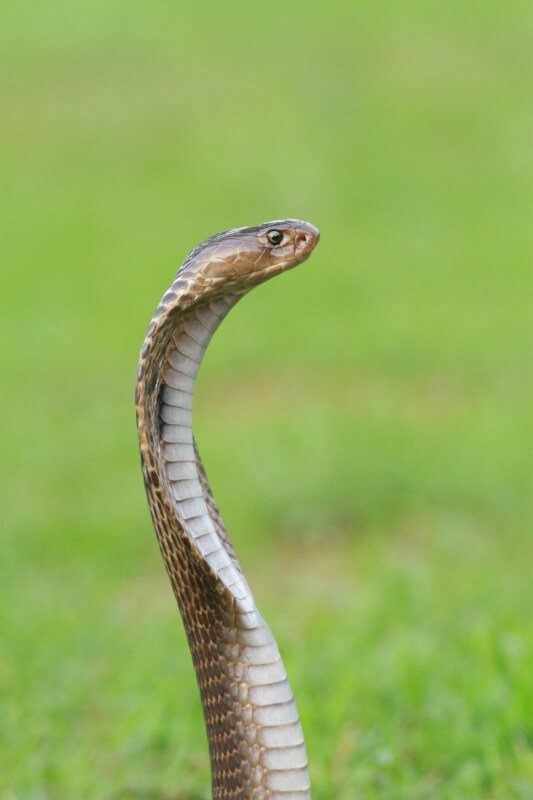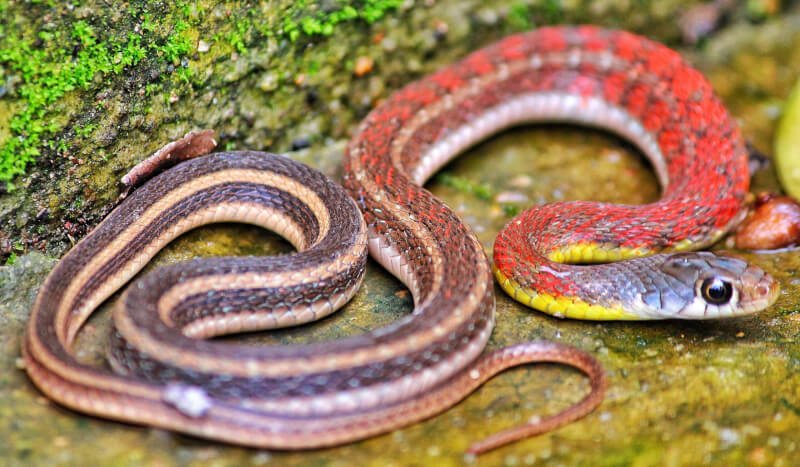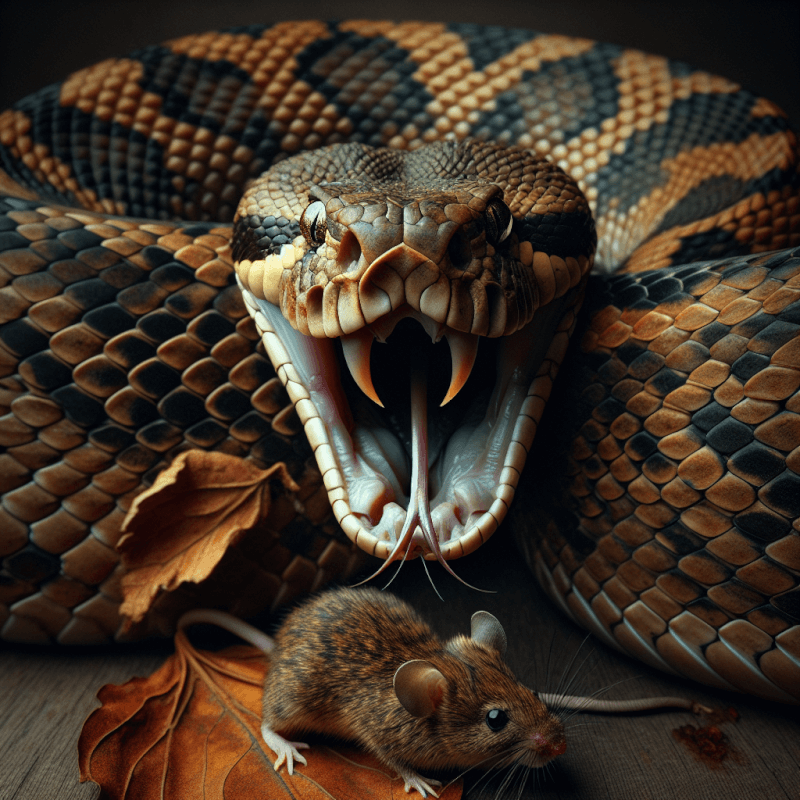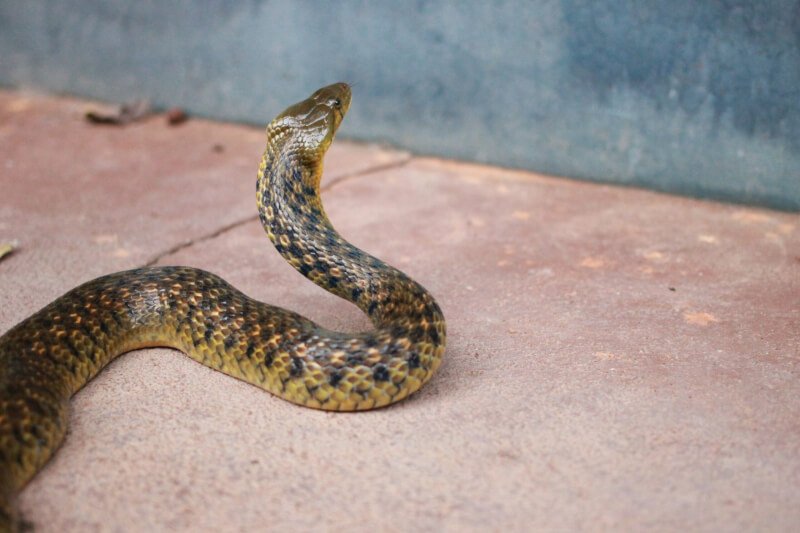If you’re a snake owner, you’ve probably wondered if it’s okay to feed your slithery friend pre-killed prey. Well, the answer is yes! Feeding your snake pre-killed prey can be a convenient and safe option for both you and your scaly companion. In this article, we’ll explore the benefits of feeding pre-killed prey to snakes, how to properly prepare the prey, and address any concerns you may have about this feeding method. So, grab a cup of tea and let’s discover the world of pre-killed prey for snakes!

Benefits of Feeding Pre-killed Prey
Reduced Risk of Injury
Feeding pre-killed prey to your snake significantly reduces the risk of injury during feeding. Live prey can cause harm to the snake, especially if it fights back or bites. By offering pre-killed prey, you eliminate the possibility of your snake sustaining wounds or injuries, ensuring their overall well-being and minimizing the need for veterinary care.
Decreased Stress for the Snake
Snakes can experience stress and anxiety when confronted with live prey. The act of hunting, catching, and overpowering live prey can be a source of tension for snakes, which may lead to prolonged stress. By providing pre-killed prey, you eliminate this stress and provide a more peaceful and relaxed feeding experience for your snake.
Easier Digestion
Pre-killed prey is softer and more easily digestible compared to live prey. This is particularly beneficial for snakes with sensitive digestive systems, such as those who have just recovered from an illness or are elderly. The reduced effort required to break down and digest pre-killed prey allows for smoother digestion and minimizes the risk of gastrointestinal issues.
Decreased Risk of Parasites or Disease
Live prey can carry parasites or diseases, which can be transmitted to your snake during feeding. When you opt for pre-killed prey, you significantly decrease the chance of your snake being exposed to these potential health risks. This promotes a healthier and safer environment for your pet.
Convenience for Snake Owners
Feeding pre-killed prey offers convenience for snake owners. Live prey can be challenging to obtain and store, requiring additional effort and resources. Pre-killed prey, on the other hand, is readily available from reputable suppliers and can be conveniently stored in your freezer until feeding time. This convenience makes feeding your snake a hassle-free process, allowing you to focus more on providing quality care for your pet.
Types of Snakes That Can Be Fed Pre-killed Prey
Non-venomous Snakes
Non-venomous snakes are ideal candidates for pre-killed prey. These snakes, including popular pet species such as corn snakes, ball pythons, and king snakes, have a natural instinct to hunt and consume prey. Feeding them pre-killed prey aligns with their biology and can be easily incorporated into their feeding routine.
Young or Juvenile Snakes
Young or juvenile snakes can also be fed pre-killed prey. Their smaller size and limited hunting skills make them more susceptible to potential injuries when hunting live prey. Pre-killed prey provides them with a safe and appropriate feeding option, allowing them to grow and develop without unnecessary risks.
Special Cases and Exceptions
While pre-killed prey is generally suitable for most snakes, there may be special cases or exceptions. Some species may have specific dietary requirements or feeding preferences that may not align with pre-killed prey. It is essential to research and consult with reptile experts or veterinarians knowledgeable about your specific snake species to ensure the best feeding practices.

How to Source Pre-killed Prey for Your Snake
Commercially Available Pre-killed Prey
Commercial suppliers offer a wide range of pre-killed prey options specifically designed for snake feeding. These suppliers ensure high-quality, disease-free prey items that are nutritionally suitable for snakes. You can find commercially available pre-killed prey, such as mice, rats, or chicks, at reputable pet stores, online reptile supply retailers, or through breeders.
Ethical and Responsible Sourcing
When sourcing pre-killed prey, it is essential to prioritize ethical and responsible practices. Choose suppliers that prioritize the welfare of their prey animals, ensuring they are humanely euthanized. Look for suppliers who provide detailed information about their sourcing methods and adhere to industry standards for ethical and responsible processing.
Preparing and Storing Pre-killed Prey
Proper preparation and storage of pre-killed prey are crucial to maintain its nutritional value and safety. Thaw frozen prey items thoroughly in a refrigerator before feeding to your snake. Avoid using a microwave or hot water to thaw the prey, as this can compromise its nutritional quality. Additionally, store pre-killed prey in airtight containers or freezer bags to prevent contamination and maintain freshness.
Alternatives to Pre-killed Prey
In some cases, snakes may not readily accept pre-killed prey. If your snake shows resistance to pre-killed prey, you can explore alternatives such as scenting or warming the prey item to enhance its appeal. Scenting involves rubbing the prey item with something that entices the snake’s interest, such as the skin of a live prey animal or a scent extract. Warming the pre-killed prey to body temperature can also make it more appealing to your snake.
Consulting a Reptile Veterinarian
If you have any concerns or questions about sourcing or preparing pre-killed prey for your snake, consulting a reptile veterinarian is highly recommended. They can provide expert guidance tailored to your specific snake’s needs, ensuring optimal nutrition and health.
Transitioning Your Snake to Pre-killed Prey
Understanding Your Snake’s Feeding Habits
Before transitioning your snake to pre-killed prey, it is essential to understand their feeding habits. Observe how they respond to live prey and their hunting techniques. This knowledge will help you determine the best approach to transitioning and ensure a successful switch to pre-killed prey.
Gradual Transitioning Process
Transitioning your snake from live to pre-killed prey should be done gradually. Start by offering a live prey item that has been pre-killed. This allows your snake to experience the sensation of capturing and constricting prey, simulating a natural hunting experience. Over time, gradually decrease the movement or stimulation of the pre-killed prey until your snake is comfortably accepting completely motionless prey.
Assisting the Feeding Response
Some snakes may require additional assistance during the transitioning process. Gently wiggling the pre-killed prey item with tongs or forceps can help trigger the snake’s feeding response. It is important to carefully monitor your snake’s behavior during feeding to ensure they are safely and successfully consuming the prey.
Troubleshooting and Seeking Professional Advice
If your snake is struggling with the transition to pre-killed prey or shows significant resistance, seek professional advice from a reptile veterinarian or experienced snake keeper. They can provide personalized recommendations or identify any underlying issues that may be hindering the transition process.

Frequency and Portion Size for Feeding Pre-killed Prey
Age and Size Considerations
The frequency and portion size of pre-killed prey vary depending on your snake’s age, size, and species. Younger snakes generally require more frequent feedings, while adult snakes can be fed less frequently. Research the specific dietary needs of your snake species to determine the appropriate feeding schedule and portion sizes.
General Guidelines for Frequency
As a general guideline, most adult snakes can be fed one appropriately sized pre-killed prey item every one to two weeks. However, individual snakes may have different nutritional requirements, so it is important to consider factors such as metabolism, activity level, and overall health when determining the optimal feeding frequency.
Monitoring the Snake’s Weight
Regularly monitoring your snake’s weight is crucial in determining if the feeding frequency and portion sizes are appropriate. Maintain a record of your snake’s weight and observe any changes over time. If your snake is consistently losing or gaining weight, adjustments to their feeding regimen may be necessary. Consult a reptile veterinarian for guidance to ensure your snake remains healthy.
Adjusting Portion Size
The size of the pre-killed prey should be proportionate to your snake’s body size. It should neither be too small nor too large, as it may be difficult for your snake to consume or cause digestive issues. Aim for prey items that create a slight bulge in your snake’s body after digestion, indicating an appropriate portion size.
Safety Precautions for Feeding Pre-killed Prey
Avoiding Choking Hazards
When feeding pre-killed prey, it is important to ensure there are no choking hazards. Remove any loose strings or pieces that could potentially obstruct your snake’s airway. This includes trimming the fur or feathers of the prey item, as well as removing any sharp bones or claws.
Proper Handling Techniques
Always practice proper handling techniques when offering pre-killed prey to your snake. Use tongs or forceps to prevent accidental bites, ensuring your hands are a safe distance away from the snake’s mouth. This minimizes the risk of snake-induced injuries during feeding.
Monitoring Feeding Interactions
While pre-killed prey reduces the risk of injury, it is still crucial to monitor your snake during feeding. Some snakes may have aggressive feeding behaviors that can lead to injuries if left unattended. Keep a close eye on the feeding interaction to intervene if necessary, ensuring the safety of both your snake and yourself.
Cleaning and Disinfecting Snake Enclosures
To maintain a clean and hygienic environment for your snake, it is important to clean and disinfect their enclosure regularly. This helps prevent the buildup of bacteria or parasites that can pose health risks to your snake. Follow recommended cleaning protocols and use reptile-safe disinfectants to ensure the enclosure is thoroughly sanitized.

Signs of Digestive Issues or Regurgitation
Recognizing Potential Digestive Problems
Constant monitoring of your snake’s digestive health is crucial to identify any potential issues. Signs of digestive problems may include regurgitation, prolonged refusal of food, lethargy, weight loss, or abnormal stool consistency. If you notice any of these signs, it is important to seek veterinary assistance promptly.
Causes of Regurgitation
Regurgitation occurs when a snake forcefully expels its food shortly after ingestion. It can be caused by various factors, including overfeeding, improper prey size, stress, gastrointestinal blockages, or underlying health conditions. Identifying the underlying cause is essential to prevent further complications and ensure your snake receives proper treatment.
When to Seek Veterinary Assistance
If your snake experiences frequent regurgitation or shows persistent signs of digestive issues, it is crucial to seek veterinary assistance. A reptile veterinarian can conduct a thorough examination, perform diagnostic tests if necessary, and provide appropriate treatment options to address the underlying cause of the digestive problems.
Common Misconceptions about Feeding Pre-killed Prey
Loss of Natural Hunting Skills
One common misconception is that feeding pre-killed prey can cause snakes to lose their natural hunting skills. However, this is unfounded. Snakes rely on a combination of instinct and learned behaviors for hunting, and feeding pre-killed prey does not eliminate their ability to hunt in the wild if necessary.
Inability to Satisfy Natural Hunting Instincts
Providing pre-killed prey can still satisfy a snake’s natural hunting instincts. The act of capturing, constricting, and consuming prey items triggers the same biological responses and allows snakes to fulfill their hunting instincts. Pre-killed prey closely simulates these natural hunting behaviors, providing appropriate mental and physical stimulation for your snake.
Nutritional Deficiencies
Some may believe that pre-killed prey is nutritionally deficient compared to live prey. However, this is not necessarily true. Commercially available pre-killed prey is specifically processed and formulated to provide adequate nutrition for snakes. Properly sourced and prepared pre-killed prey can offer a balanced diet for your snake, ensuring they receive the necessary nutrients for growth and overall well-being.

Factors to Consider Before Transitioning to Pre-killed Prey
Snake’s Age and Health Condition
Consider your snake’s age and health condition before transitioning to pre-killed prey. Elderly or ill snakes may have specific dietary needs or restrictions that require the expertise of a reptile veterinarian. Similarly, young snakes may require more frequent feedings to support their growth and development.
Species-specific Feeding Behavior
Each snake species may have unique feeding behaviors and preferences. Some species, such as arboreal snakes, may prefer live prey that stimulates their natural hunting behaviors. Research your snake’s specific species requirements and consult with experienced snake keepers or professionals to ensure the choice of pre-killed prey aligns with their biological needs.
Feeding Response and Enthusiasm
Observing your snake’s feeding response and enthusiasm can provide valuable insights into their preferences and readiness for transitioning to pre-killed prey. If your snake consistently refuses or shows disinterest in live prey, it may indicate a higher likelihood of accepting pre-killed prey. However, it is important to monitor their response during the transitioning process to ensure they successfully adapt.
Owner’s Comfort and Experience Level
Consider your comfort and experience level as a snake owner when deciding whether to transition to pre-killed prey. Feeding live prey can be challenging for some owners due to ethical concerns or personal preferences. Choosing pre-killed prey allows you to provide adequate nutrition while aligning with your comfort level and ensuring the well-being of both your snake and the prey animals.
Conclusion
Feeding your snake pre-killed prey offers numerous benefits, including reduced risk of injury, decreased stress, easier digestion, decreased risk of parasites or disease, and convenience for snake owners. While pre-killed prey is suitable for most non-venomous and young snakes, it is essential to consider species-specific feeding behaviors and consult with experts if necessary. Proper sourcing, preparation, and storage of pre-killed prey are crucial for maintaining its nutritional value and safety. Transitioning to pre-killed prey requires understanding your snake’s feeding habits, gradual transitioning, and monitoring their response. Paying attention to portion sizes, weight monitoring, and safety precautions ensures a healthy and safe feeding routine for your snake. While misconceptions exist, pre-killed prey can still satisfy your snake’s natural hunting instincts and provide adequate nutrition. Considering factors such as your snake’s age, health condition, species-specific needs, and your comfort level as an owner is crucial before transitioning to pre-killed prey. Overall, feeding pre-killed prey to your snake promotes their well-being and allows for a more convenient and rewarding feeding experience for both you and your pet.


